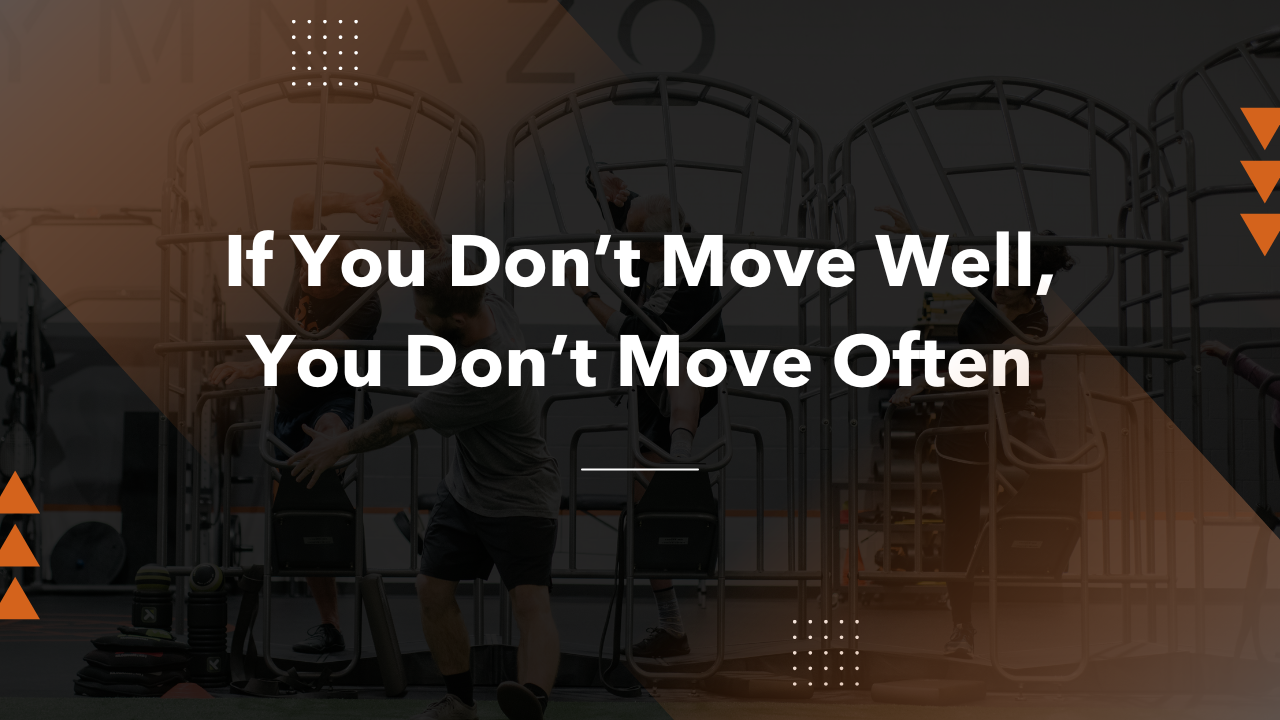October 16, 2025

The difference between those who stay strong for decades and those who slow down too soon often comes down to one thing:
“If you don’t move well, you don’t move often. And if you can’t move well often, you can’t move under load, and you can’t move with speed, whether you’re 35 or 75.”
It’s simple, but it’s a truth most of us overlook.
Movement quality is the foundation for everything, strength, power, endurance, longevity. And when that foundation cracks, even slightly, the effects ripple far beyond the gym.
The Domino Effect of Dysfunction
Our bodies are incredibly adaptive. They’re designed to compensate, protect, and find a way to keep us moving, even when something isn’t working quite right. But that adaptability is a double-edged sword.
A small dysfunction starts, and we usually choose one of three paths:
Maybe it’s your shoulder, hip, or knee, so you skip movements that aggravate it and train around the problem. But avoidance doesn’t solve anything. The muscles surrounding the joint weaken, compensations increase, and dysfunction deepens. What started as a small imbalance can spiral into a bigger limitation.
The old-school advice of “just rest it” might offer temporary relief, but if you never address the root cause, the problem will more than likely come back often worse. Rest alone doesn’t restore function.
Thanks to decades of “no pain, no gain” messaging, many people believe discomfort is a sign of progress. But pain is not the same as muscle fatigue, it’s a signal from your nervous system that something is wrong. Ignoring that signal and pushing harder can lead to long-term damage that’s far more difficult to fix.
Why This Matters More As You Age
If you’re over 40, your body has already weathered four decades of use, and chances are, you’re starting to notice some wear and tear becoming a little reminder in the back of your head that you are not invincible. Maybe it’s a nagging shoulder when you reach overhead or a low back that protests every time you bend forward.
Now think about this: you’re probably not even halfway through your life yet. Your prime years, the ones filled with travel, adventure, hobbies, and grandkid-chasing, are still ahead. What you feel now is just the starting point. Imagine the compounding effects of those aches and compensations over the next 30 or 50 years.
This is where how you train becomes more important than ever. Many exercise programs focus on isolated strength or flexibility, which can absolutely improve certain aspects of fitness, but they often miss a key piece: specificity. Your body adapts to the demands you place on it. If your workouts don’t mimic the ways you actually want to move in real life, twisting to load the trunk of your car, lifting a suitcase overhead, catching yourself from a fall, sprinting after a toddler, then your training is leaving blind spots.
Training should prepare your muscles, joints, and nervous system for the unpredictable, multi-directional, real-world demands of life. That means strength in more than one plane of motion, mobility that supports quick changes in direction, and stability that keeps you resilient when things don’t go as planned. When your workouts reflect the movements you want to keep doing for decades, you’re not just exercising, you’re future-proofing your body.
The Shift Toward Sustainable Strength
If your workouts always leave you feeling wrecked, sore, or limping, it’s time to re-evaluate and change your approach. The goal isn’t to punish your body, it’s to prepare it. To build a foundation that lets you move well now, so you can keep moving often, and confidently, for decades to come.
A sustainable movement practice is one that:
When you train this way, you’re not just working out. You’re investing in the future version of you, the one hiking mountains in retirement, playing with grandkids on the floor, and living fully without fear of pain or limitation.
Ready to See Where Your Movement Stands?
At Gymnazo, we’ve built our entire approach around one principle: train your body for the life you want to live. Our proprietary MōV Method is a three-phase system designed to help you do exactly that:
The best way to start is with a 1:1 MōV Assessment. During this personalized session, you’ll work directly with a coach to uncover hidden compensations, unlock new movement potential, and create a clear roadmap for sustainable strength and longevity.
👉 [Book Your MōV Assessment Here] and take the first step toward moving well, moving often, and moving for life.
Share it: